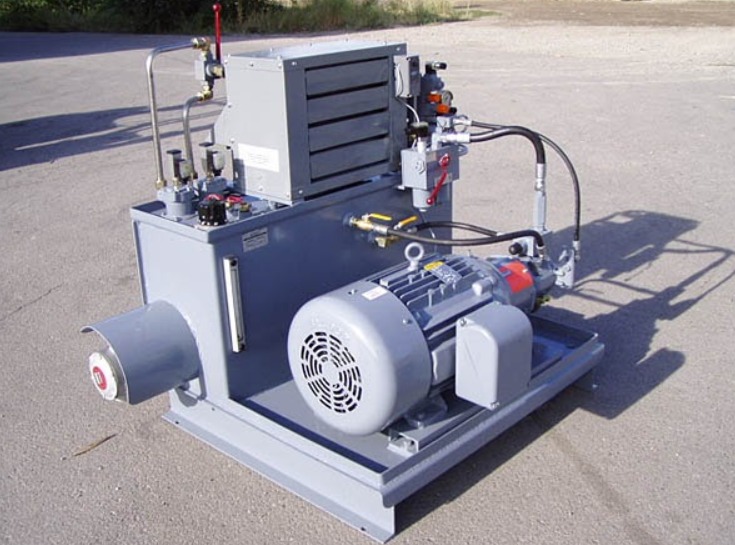When Should I Adjust A Relief Valve?
Never, Never, NEVER! UNLESS YOU:
- Understand what a relief valve is, how it operates and what purpose it serves in your system.
- You know what the intermittent pressure rating of all the pressurized components in the system are.
- Actually, know the valve you are adjusting is a relief valve.
- All personnel are safe and you have a clear line of site (or direct real-time communication with someone who does) of the machine being operated.
- Finally, be 100% certain you know what you are doing so you and the people you work with can go home to your families safely.
 Relief valves are easily the most needlessly adjusted valve in a hydraulic system. Apart from extremely rare applications, relief valves are passive components in the hydraulic system. They are a safety device similar in nature to an electrical circuit breaker in your home. If your circuit breaker trips, do you install a bigger circuit breaker to keep it from tripping again? Of course not! You may reset it a couple of times, but if it keeps tripping, you call a professional in to find out why. What makes a relief valve more dangerous is that unlike a circuit breaker it resets itself. Thus, a relief set excessively high will repeatedly expose system components to pressures beyond their continuous rated capacities.
Relief valves are easily the most needlessly adjusted valve in a hydraulic system. Apart from extremely rare applications, relief valves are passive components in the hydraulic system. They are a safety device similar in nature to an electrical circuit breaker in your home. If your circuit breaker trips, do you install a bigger circuit breaker to keep it from tripping again? Of course not! You may reset it a couple of times, but if it keeps tripping, you call a professional in to find out why. What makes a relief valve more dangerous is that unlike a circuit breaker it resets itself. Thus, a relief set excessively high will repeatedly expose system components to pressures beyond their continuous rated capacities.
A few years ago, a facility had 18” bore cylinders weighing approximately 6,000 lbs. that had been ripped off an overhead I-beams and fell to the floor. Previously to the incident, there had been an occasion where the machine had not been able to lift the load as it had previously. An unknown maintenance person randomly adjusted up the reliefs to their maximum setting without the authorization or notification of the maintenance supervisors. It was subsequently found that the relief that was to be set at 2850psi had been adjusted to its maximum setting (315bar / 4567psi).
Let’s Do Some Math:
- 18” Bore cylinder has 254.5in2 effective area.
- There were two cylinders working together. So, 254.5 x 2 = 509in2 effective area.
- At the reliefs correct setting (2850psi) the two cylinders would produce:
- 509 x 2850 = 1,450,650 lbs force.
- 509 x 2850 = 1,450,650 lbs force.
- Withy reliefs set to their maximum setting the two cylinders would produce:
- 509 x 4567 = 2,324,603 lbs force!
Damage and Cost
The damage and cost were not limited to the cylinder repair, removal, and replacement (approximately $50,000) or the 50+ hours of lost production (approximately $1,250,000) but several other mechanical components were exposed to forces beyond their continuous ratings, resulting in shortened duty cycle. Had the original issue been investigated it would only have required a slight adjustment to the relief until the next weekly scheduled downturn. The real issue could have been resolved and the reliefs adjusted back to their correct setting for a fraction of the cost. As bad as that was, at least the unknown mechanic incorrectly adjusted the right valve and on the bright side no one was injured or killed.
For every situation like the above there are a hundred where “some valve” was adjusted without reason. In almost every instance some damage is being done to a system component or fluid. When system pressure is raised, duty cycle is reduced. In a properly designed hydraulic system, the item with the biggest impact on duty cycle and reliability is system pressure.
Two identical systems, operating at different pressures will have significantly different duty cycles. If one is operating at 2000psi and the other at 1000psi, the 2000psi system will have 1/8th the life of the 1000psi system!
More About Relief Valves
Future blog posts will discuss how a relief valve works, the different types of relief valves, how to correctly troubleshoot a relief valve and how to adjust a relief valve.
“We are eager to assist in making our customers better. Our strength is not being afraid to say "We don't know", while having the intellectual curiosity to find out how.”
~ Vince Naccarato
Need Assistance?
Need some help? Need some training? Give us a call. We’re pretty good at this stuff.
